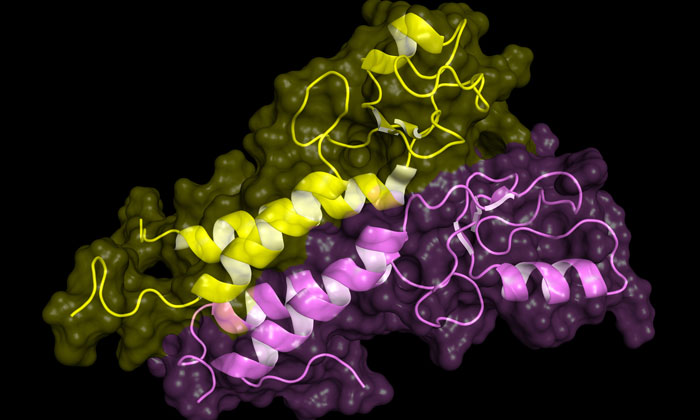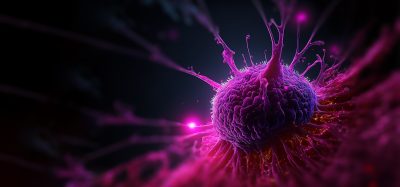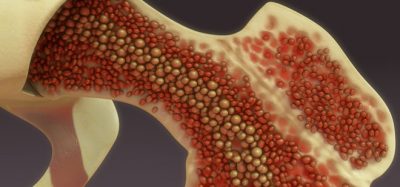The mechanism of PARP inhibitor action is identified
Posted: 22 March 2024 | Drug Target Review | No comments yet
New findings will enable the development of safer PARP inhibitors that inhibit PARP’s enzymatic activity without trapping it on DNA.


BRCA1-tumour
Scientists from the University of Geneva (UNIGE), in collaboration with FoRx Therapeutics, have identified the mechanism of action of PARP inhibitors used for breast and ovarian cancer in patients with the BRCA gene mutation. Their findings will help to improve the efficacy of these treatments.
The genome of our cells is mostly stable because of a highly efficient repair system, despite thousands of lesions that damage our DNA every day. Among the genes coding for repair proteins are BRCA1 and BRCA2, which are involved in DNA double helix breaks. The mutations of BRCA1 and BRCA2 are present in around two of every 1,000 women and can result in non-repair of damaged DNA, and greatly increase the risk of developing breast or ovarian cancer.
PARP inhibitors have been used to treat breast and ovarian cancer for around 15 years. PARP proteins can identify breaks or abnormal structures in the DNA double helix, which then temporarily stick to the DNA, synthesising a chain of sugars which acts as a signal to recruit the proteins involved in DNA repair. Treatments based on PARP inhibitors block these activities and trap the PARP protein on the DNA, meaning there is no signal to initiate DNA repair.
Biomarkers are redefining how precision therapies are discovered, validated and delivered.
This exclusive expert-led report reveals how leading teams are using biomarker science to drive faster insights, cleaner data and more targeted treatments – from discovery to diagnostics.
Inside the report:
- How leading organisations are reshaping strategy with biomarker-led approaches
- Better tools for real-time decision-making – turning complex data into faster insights
- Global standardisation and assay sensitivity – what it takes to scale across networks
Discover how biomarker science is addressing the biggest hurdles in drug discovery, translational research and precision medicine – access your free copy today
Although this treatment is toxic for fast-growing cells like cancer cells, which generate too many mutations without having time to repair them, our bodies are also home to fast-growing healthy cells, like haematopoietic cells, which are destroyed by anti-PARP treatments.
The mechanisms by which anti-PARP drugs kill cells are still poorly understood. Now, Dr Thanos Halazonetis’ laboratory in the Department of Molecular and Cellular Biology at the UNIGE Faculty of Science, and FoRx Therapeutics, has dissected the mechanisms of action of PARP inhibitors. The team used two classes of PARP inhibitors that identically block PARP’s enzymatic activity but do not trap PARP on DNA with the same strength. It was observed that both inhibitors kill cancer cells with the same efficiency, but that the inhibitor that weakly binds PARP to DNA is much less toxic to healthy cells.
First author of the study Dr Michalis Petropoulos, post-doctoral fellow in the Department of Molecular and Cellular Biology at the UNIGE Faculty of Science, explained: “We discovered that PARP not only acts as an alarm signal to recruit DNA repair proteins, it also intervenes when abnormal DNA structures are formed as a result of collisions between different machineries that read or copy the same portion of DNA.”
This warning signal to prevent collisions is not triggered when using anti-PARP treatment. These collisions between the machinery will lead to an increase in DNA lesions, which cannot be repaired in cancer cells, because they lack the BRCA repair proteins. The second activity of PARP treatments, resulting in tight binding of PARPs on DNA also leads to DNA damage. This needs to be repaired by cells, but because this repair is not mediated by the BRCA repair proteins, both normal and cancer cells are killed.
Head of the study Dr Halazonetis concluded: “We therefore discovered that inhibition of the enzyme activity is sufficient to kill cancer cells, whereas trapping – when PARP is strongly bound to DNA – kills the normal cells as well, and therefore is responsible for the toxicity of these drugs…This knowledge will make it possible to develop safer PARP inhibitors that inhibit PARP’s enzymatic activity without trapping it on DNA.”
This study was published in Nature.
Related topics
Cancer research, DNA, Drug Development, Enzymes
Related conditions
Breast cancer, Cancer Research, Ovarian cancer
Related organisations
FoRx Therapeutics, University of Geneva (UNIGE)
Related people
Dr Michalis Petropoulos (UNIGE), Dr Thanos Halazonetis (UNIGE)








